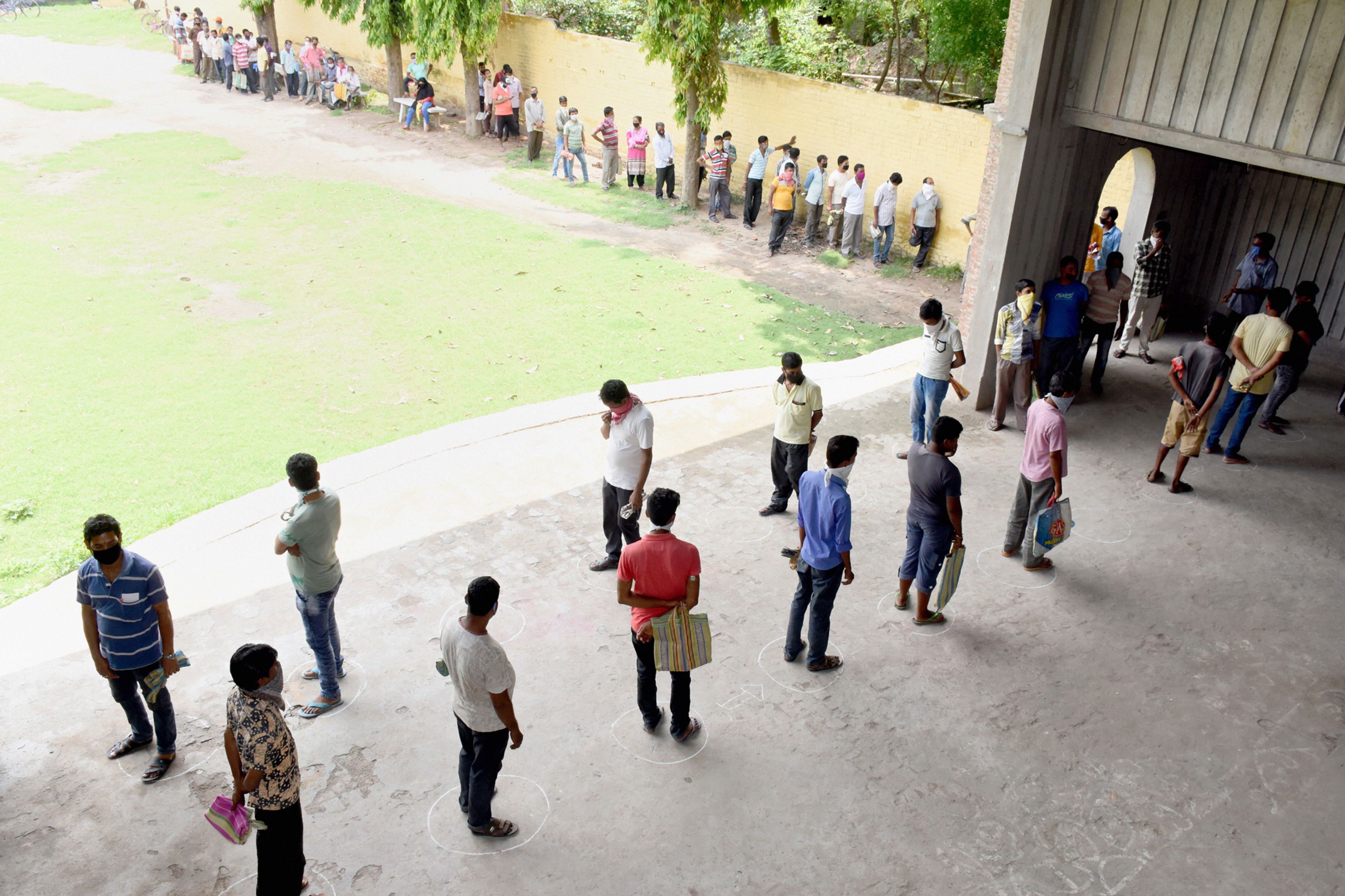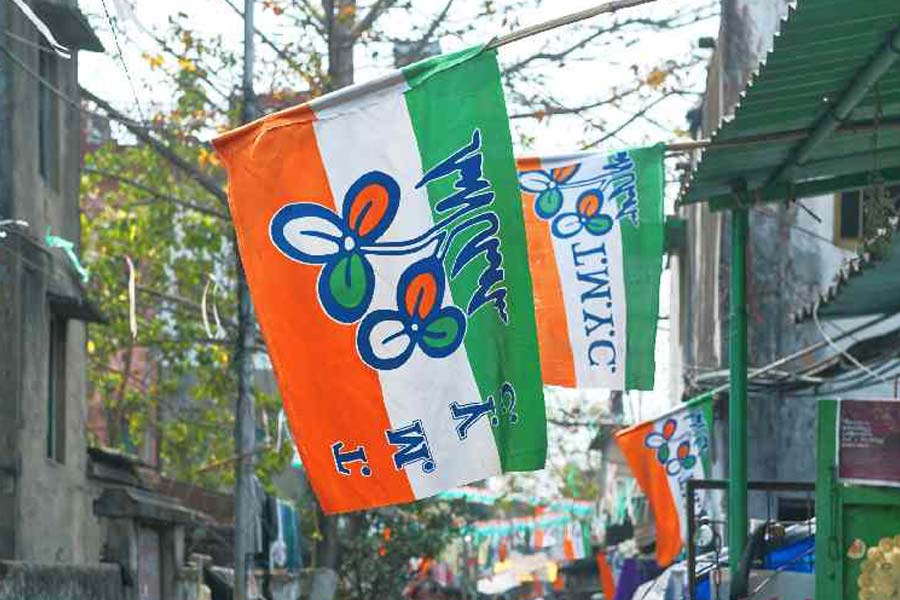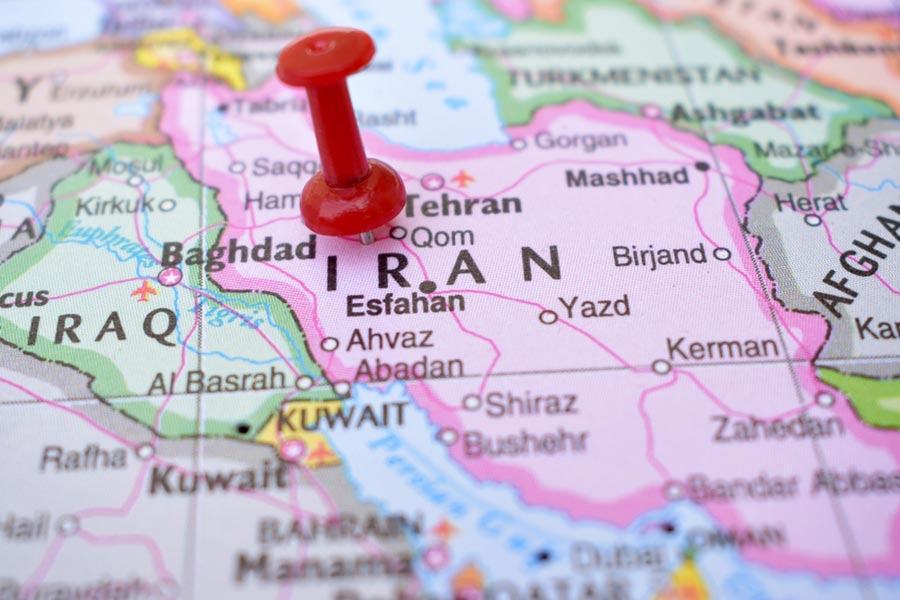The Union health ministry has labelled 130 districts as “red” and 284 as “orange” zones, adopting revised criteria to classify Covid-19 affected areas.
The ministry said the districts could earn “green” labels if they reported no new infections for 21 days.
Under the revised criteria, according to the central ministry, Bengal has 10 red zones: Calcutta, Howrah, North 24-Parganas, South 24-Parganas, West Midnapore, East Midnapore, Darjeeling, Jalpaiguri, Kalimpong and Malda. The Bengal government says the state has no more than four red-zone districts.
The Centre has classified five Bengal districts as orange zones: Hooghly, Burdwan West, Burdwan East, Nadia and Murshidabad.
The list released in New Delhi on Friday has 319 green zones, including six Bengal districts that have reported no Covid-19 cases.
The Union health ministry has said states may “not relax” the zonal classification of districts as done by the ministry but “may designate additional red or orange zones as appropriate”.
The country’s total number of confirmed Covid-19 cases rose by 1,775 overnight to reach 35,365 on Friday. More than 9,000 patients have recovered and 1,052 have died.
The Centre’s revised criteria for classifying districts rely on quantitative measures of Covid-19 cases, the doubling time for the total number of infections, the extent of testing, feedback from local disease surveillance authorities and the population density in each district, health officials said.
The classification of districts depends on all these factors, the officials said. For instance, a district with small numbers of Covid-19 patients but a high population density that might cause the numbers to grow could be labelled as red or orange.
The earlier criteria relied on two factors — the number of cases and the doubling time.
Health experts and virologists have welcomed the new classification system, saying it is dynamic and takes into account the appropriate factors. But some have cautioned that without expanded testing and high levels of surveillance, the virus might slip into green zones unnoticed.
“It (the new classification system) will enable resumption of economic and social activities in the green zones, a watchful vigil in the orange zones and intense containment efforts in the red zones,” said K. Srinath Reddy, president of the Public Health Foundation of India and member of a national task force on Covid-19.
But Reddy and others underlined that physical distancing norms, hand hygiene and the use of protective masks in public would still be needed everywhere.
“This classification system decentralises the problem, allowing tailored solutions instead of a one-size-fits-all solution for the entire country,” said Shahid Jameel, senior virologist and chief executive officer with the Wellcome Trust-DBT India alliance, an India-UK research partnership.
“However, this entails efficient testing (on a large) scale,” Jameel said. “It is also troubling how a public health problem is being treated as a law-and-order problem. More community involvement, less policing and (more) relief for vulnerable people will help build the trust necessary to overcome the pandemic.”
Local health authorities in the red and orange districts will need to delineate the “containment zones” -- and the “buffer zones” around the containment zones -- within each district, depending on the number and the geographic distribution of Covid-19 patients there, the presence of areas with well-demarcated perimeters, and the enforceability of the stipulated restrictions.
In urban areas, for instance, a residential colony, a “mohalla,” a municipal ward or a municipal zone may be designated as a containment zone. In rural areas, villages, clusters of villages or panchayats or blocks could be marked out as containment zones. The extent of the buffer zones would vary depending on the locations.
Within the containment zones, the health ministry has called for “stringent perimeter control” with clear entry and exit points and no movement except to seek essential goods and services or relief in medical emergencies.
Local health authorities will need to undertake house-to-house surveys in the containment zones to look for patients and test anyone who shows Covid-19 symptoms such as fever, cough or shortness of breath. In the buffer zones, health authorities will need to test all patients who complain of influenza-like illness or severe acute respiratory illness symptoms.
“Outside these containment zones, whether within red or orange districts, there would be some relaxation on restrictions that would be notified by the home ministry,” a senior health official said.
Red or orange districts that do not report new Covid-19 cases for 21 days may be considered “as one level lower in the zonal classification” – that is from red to orange or from orange to green --- the health ministry said.
A public health specialist cautioned that the surveillance needs to be rigorous. “Green zones should not give a false sense of security,” said Oommen John from The George Institute for Public Health, New Delhi.
“Our surveillance should be ultra-sensitive so that early signs of transmission are picked up even in green zones.”
People who test positive for Covid-19 may not be sent to hospitals or Covid care centres under a new home isolation policy the health ministry proposed earlier this week.
Under this policy, patients with very mild symptoms or no symptoms could stay home if their homes provide adequate isolation space for them and quarantine space for their caregivers along with other conditions such as a 24x7 caregiver at home.










